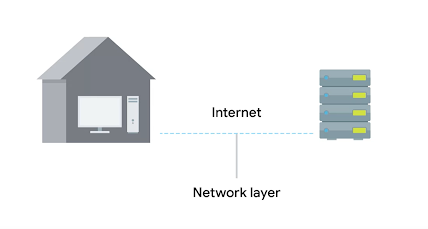In networking ,the most commonly used model is 5-layer model besides OSI model and 4 -layer model with some changes made to 5-layer model
5-Layers:
- Physical Layer
- Data-Link Layer
- Network Layer
- Transport Layer
- Application Layer
Physical Layer
Represents the physical devices that interconnect computers
Responsible for defining a common way of interpreting the signals produced by the physical layer so that network devices can communicate.
It uses Ethernet Protocol to efficiently send data packets i.e Ethernet frames in this layer).Ethernet protocol makes sure the node’s identity (i.e MAC address-Hardware address)to send the data packets
It uses Ethernet Protocol to efficiently send data packets i.e Ethernet frames in this layer).Ethernet protocol makes sure the node’s identity (i.e MAC address-Hardware address)to send the data packets
Network Layer
Allows different networks to communicate with each other through devices known as routers. Network layer deliver data across a collection of networks. This layer uses IP(Internet Protocol) predominantly to find the correct network where the destination node is present through Routers which connects
While the network layer delivers data between two individual nodes, the transport layer sorts out which client and server program are supposed to get that data. This layer uses TCP(Transfer Control Protocol)/UDP(User Datagram Protocol). TCP ensures that data is reliably delivered while UDP does not.
Application Layer
This layer uses various protocols depending on the applications. For example, HTTP(Hyper Text Transfer Protocol) is used by the web-servers and the web-pages
Real Life Example:



Comments
Post a Comment